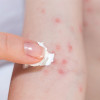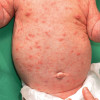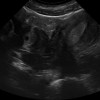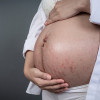
 IJCP Editorial Team
IJCP Editorial Team
A Non-Randomized Controlled Trial On Perineal Tear Prevalence Following Two Antepartum Perineal Massage Techniques
Perineal tear is a tissue lesion that occurs during vaginal delivery and is classified into four degrees: First-degree affects only the vaginal mucosa or perineal skin; second-degree affects perineum muscular fibers; in the third degree the muscular lesion also affects anal sphincter muscles, and in fourth-degree tear, the rectal mucosa is affected. Third-degree tears are subdivided into three types: (a) less than 50% of the external anal sphincter fibers are torn; (b) more than 50% of external anal sphincter fibers are torn, and (c) both external and internal anal sphincters are torn. Risk factors of third- and fourth-degree tears are split into three subgroups: maternal, fetal, and intrapartum.
Prevalence in developed countries varies, reaching 10.2% in women who had a vaginal birth, although there is a recognized lack of standardization in perineal tear identification, and is also underdiagnosed on numerous occasions. During the last two decades, there has been a growing body of scientific evidence about the benefits and efficiency of perineal massage in the prevention of perineal injuries during delivery and reduction of incidence and severity of the perineal tear. The physiological explanation is that massage increases the elasticity of myofascial perineal tissue and decreases the burning and perineal pain during labor, thus optimizing childbirth.
Hence, a study was conducted to determine the efficiency of massage in perineal tear prevention and identification of possible differences in its mode of application. A non-randomized controlled trial was made on the following inclusion criteria: (a) women between 18 and 40 years of age; (b) full-term delivery (37th week or more); (c) single gestation and with the cephalic presentation; (d) pregnancy with no complications, nor added risks during gestation; (e) no participation in any other psycho prophylaxis intervention. In the study, the participants were divided into three groups: Perineal massage and EPI-NO® device group, applied by an expert physiotherapist (n = 30); self-massage group, where women were instructed in perineal massage application in the domestic household (n = 30); and a control group (n = 30), which received ordinary obstetric attention (medical controls and regular information sessions by the midwife).
According to the results obtained, massage was found to be efficient in preventing perineal tears. Also, a difference between the effectiveness of self-application and massage by a physiotherapist was observed. A Prevalence of perineal tears was found to be around 40% in the control group, 30% in the self-massage group, and 26.6% in the massage group. Perineal pain was significantly lesser in the group that received a massage by a physiotherapist compared to the other two groups. The study showed that the intensity of perineal pain was not associated with the baby’s weight or duration of delivery, episiotomy, the posture of delivery, or the use of equipment or analgesia during labor. Hence, it can be concluded that perineal massage reduces postpartum perineal pain and the severity of perineal tears during delivery. Moreover, perineal massage applied by a healthcare professional has positive effects significantly better than those of self-massage.
Reference: Álvarez-González M, et al., J Clin Med. 2021 Oct 25;10(21):4934.

IJCP Editorial Team
Comprising seasoned professionals and experts from the medical field, the IJCP editorial team is dedicated to delivering timely and accurate content and thriving to provide attention-grabbing information for the readers. What sets them apart are their diverse expertise, spanning academia, research, and clinical practice, and their dedication to upholding the highest standards of quality and integrity. With a wealth of experience and a commitment to excellence, the IJCP editorial team strives to provide valuable perspectives, the latest trends, and in-depth analyses across various medical domains, all in a way that keeps you interested and engaged.













Please login to comment on this article